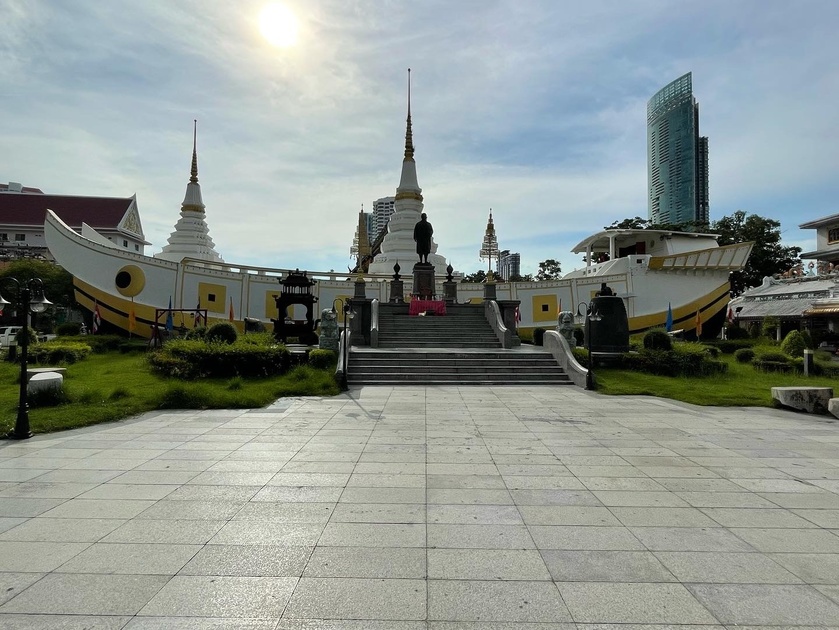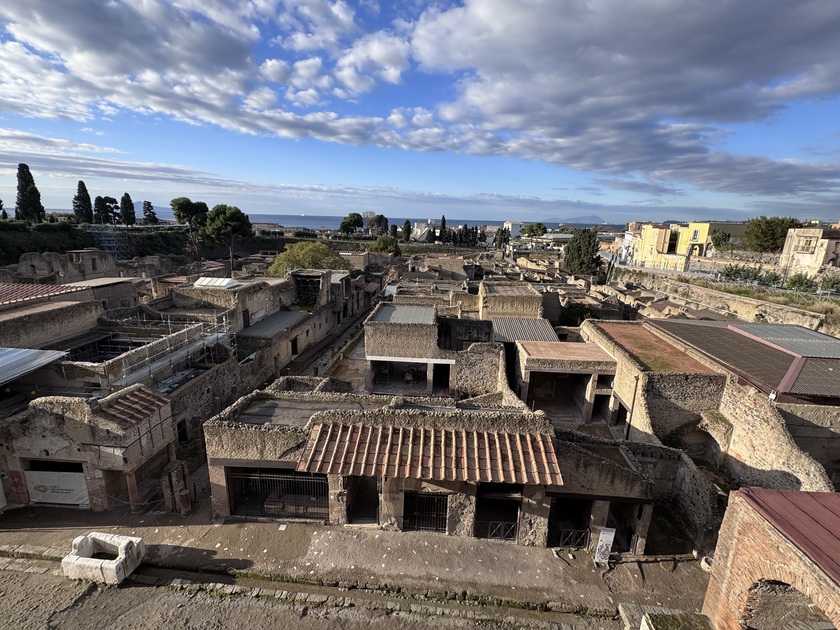On the banks of the Chao Phraya river in Sathorn district is Wat Yannawa, a temple little known to foreign visitors.
Wat Yannawa is also known as “the boat temple” and is a 3rd class Royal Temple. The most distinctive feature of the large complex is the viharn built in the shape of a Chinese junk vessel, a 19th century sailing ship.
The Wat Yannawa is one of the older temples in Bangkok; it was built during the time of the Ayutthaya Kingdom, before the founding of the Rattanakosin Kingdom and the city of Bangkok. At that time the temple was called Wat Kok Khwai.
During the reign of King Nangklao (Rama III, 1824 - 1851) a viharn was built in the shape of a Chinese junk ship and the temple renamed to Wat Yannawa, which translates to “the boat temple”.
The King had the boat like structure built to serve as a memorial to the Chinese junk vessels that were used intensively for trade with China and that had brought prosperity to the Kingdom. During the reign of King Nangklao the Chinese sailing vessels were being replaced by steam ships.
Herculaneum, an ancient Roman town nestled at the base of Mount Vesuvius on the Bay of Naples in modern-day Ercolano, Italy, began as a seaside settlement with roots tracing back to legendary founding by Hercules, though historical evidence points to Oscan origins around the 6th or 7th century BC.
Over centuries, it passed through Greek influence, Samnite control in the 4th century BC, and finally became a Roman municipium in 89 BC after the Social War.
Smaller and wealthier than nearby Pompeii, with a population of about 4,000 to 5,000, Herculaneum served as an elegant resort for Roman elites, boasting luxurious villas overlooking the sea, sophisticated architecture, and a prosperous economy tied to trade and fishing.
A severe earthquake in 62 AD damaged much of the town, and repairs were still underway when catastrophe struck on August 24-25, 79 AD.
Unlike Pompeii, which was buried primarily under ash and pumice, Herculaneum lay northwest of the volcano and initially escaped the heaviest fallout due ...
The Ruins of Pompeii: A Frozen Snapshot of Ancient Rome
Pompeii was a thriving ancient Roman city in Campania, Italy, near modern Naples. Founded around the 7th–6th century BC (possibly by the Oscans), it grew into a prosperous port and resort town with a population of about 10,000–20,000 by the 1st century AD. On August 24, 79 AD, Mount Vesuvius erupted catastrophically in a Plinian eruption, ejecting ash and pumice high into the atmosphere before unleashing deadly pyroclastic surges.
The city was buried under 4–6 meters (13–20 feet) of volcanic material, preserving it remarkably well—streets, buildings, frescoes, artifacts, and even casts of victims in their final poses.
This rapid burial created one of the world’s best-preserved ancient sites, offering unparalleled insights into Roman daily life: homes with gardens, bakeries with loaves still in ovens, theaters, baths, brothels, and graffiti on walls.
Rediscovered in the late 16th century and systematically excavated from 1748, ...
The Pantheon in Rome—one of the Eternal City’s most mesmerizing wonders! This ancient marvel has stood for nearly 2,000 years, blending engineering genius with timeless beauty.
Built around AD 126 by Emperor Hadrian (though it bears an inscription crediting Marcus Agrippa from an earlier version), the Pantheon started as a temple to all the gods (“Pan-theon” means “all gods” in Greek). It survived fires, floods, and centuries of history thanks to its conversion into a Christian church in AD 609. Today, it’s the Basilica of St. Mary and the Martyrs, making it the best-preserved ancient Roman building in the world.
The real showstopper is the massive unreinforced concrete dome—the largest of its kind ever built, at 43 meters (142 feet) in diameter and height. It’s perfectly proportioned, with a 9-meter (30-foot) oculus (open hole) at the top that lets in natural light and even rain (the floor has tiny drains for those sunny showers!). The interior feels ethereal, especially ...




















































